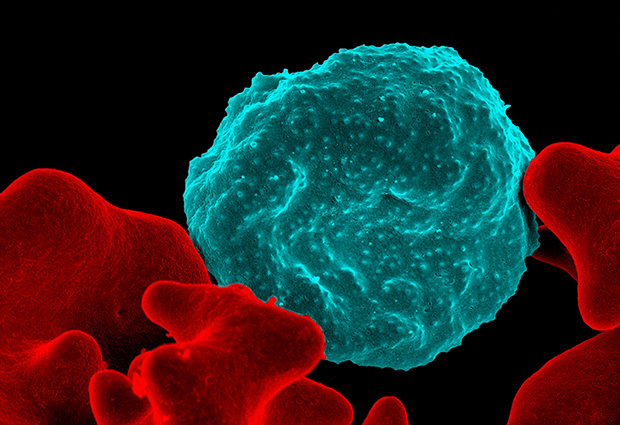
Mapping malaria
First detailed atlas of start points for genes expression in malaria-causing parasite

EMBL scientists have created the first detailed atlas of the start points where genes are expressed in the genome of the malaria-causing parasite Plasmodium falciparum. The researchers hope this atlas, published today in Cell Reports, will provide a new framework for understanding how and why gene expression changes across the parasite’s life cycle in human blood cells, and may eventually open windows onto new therapeutic avenues.
The World Health Organization estimates that 438,000 people died from malaria in 2015, and nearly all of these deaths were caused by infection by the protozoan parasite P. falciparum. Although its genome was sequenced in 2002, there’s still a lot to learn about the parasite’s biology and possible new ways of treating infections.
Biologists have worked out what roughly half of P. falciparum’s genes do, but the function of the rest remains unclear. It’s also known that some genes are expressed at different times in the life cycle of P. falciparum. But it’s been less clear exactly how the parasite controls gene expression during different stages of its life cycle, from its development inside a mosquito to its asexual reproduction in a human blood cell – the stage that causes most of the symptoms of malaria, and which was the focus of the new study.
This has been long-awaited by the malaria research community
One part of the puzzle of P. falciparum gene expression is identifying regions of the genome where gene expression begins – so-called transcription start sites (TSSs). This is the challenge taken up in new research from the lab of Lars Steinmetz at EMBL Heidelberg by Sophie Adjalley, Christophe Chabbert, Bernd Klaus and Vincent Pelechano. Together, they’ve created the most detailed map to date of TSSs in the P. falciparum genome. “This has been long-awaited by the malaria research community,” says Adjalley, who is now based at the Sanger Institute in Cambridge, UK.
Finding TSSs in the P. falciparum genome has been difficult in the past because it has an unusual composition, with A/T base pairs making up 80–90% of the genome. To make their TSS map, Steinmetz and colleagues drew on their expertise in transcriptomics to tweak existing protocols for cap analysis of gene expression (CAGE) so they would work in P. falciparum.
The resulting atlas shows that TSSs are widely distributed throughout the P. falciparum genome. It also reveals that single genes may have a number of TSSs associated with them, enabling different versions – isoforms – of the gene to be expressed depending on the TSS that is used. Crucially, a subset of these genes switches between different TSSs depending on the life-cycle stage of P. falciparum, providing a clue that the resulting isoforms have specific roles at particular times in the life cycle. “The next question is to work out the biological roles of these genes,” says Adjalley.
Doing so could open up new pathways for treating infection with P. falciparum. But beyond the malaria research community, the new work offers a novel protocol for studying transcription mechanisms in general, and particularly for other nucleotide-biased genomes, such as the A/T-rich genome of the soil-living social amoeba Dictyostelium discoideum that is often used as a model organism because it has a number of genes similar to those found in humans. “We hope that other researchers will find our approach useful, and to that end we provided a detailed description of the protocol we developed,” says Adjalley.


